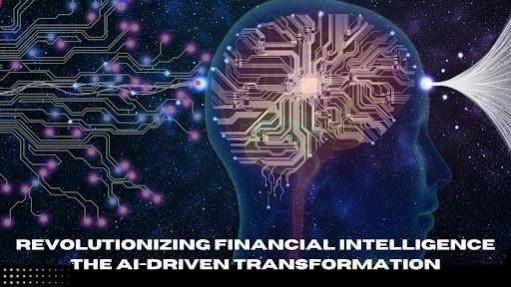
The financial sector is undergoing a major transformation with the rise of Artificial Intelligence (AI) and Business Intelligence (BI). Mallikarjun Reddy Ramasani, a thought leader in financial analytics, delves into the ways AI is reshaping data visualization, decision-making, and operational efficiency. This article explores key innovations driving financial intelligence forward.
The Shift from Traditional to AI-Enhanced Analytics
Financial institutions have long relied on historical data analysis for insights. However, AI-driven analytics have redefined this approach by integrating real-time processing and predictive modeling. Unlike conventional methods, AI systems can process massive amounts of structured and unstructured data instantly, enabling financial organizations to anticipate market shifts and mitigate risks more effectively. The transition to AI-enhanced analytics has thus introduced a new level of accuracy and responsiveness in financial decision-making.
Machine Learning: A Game Changer in Financial Analysis
Machine learning has become a cornerstone in financial intelligence, providing sophisticated capabilities for fraud detection, risk assessment, and trend prediction. By identifying complex patterns within datasets, machine learning algorithms offer precise insights that were previously unattainable. These tools empower financial analysts to move beyond static reports and embrace a proactive approach, enhancing both security and operational efficiency.
Advanced Data Visualization for Strategic Insights
AI-powered data visualization tools have redefined how financial data is presented and interpreted. Traditional financial reports often relied on static charts and tables, which made it challenging to identify trends. Now, AI-enhanced visualization tools dynamically represent data through interactive dashboards, heat maps, and predictive models. This innovation allows financial professionals to make faster and more informed decisions, optimizing resource allocation and strategic planning.
The Role of Domain Expertise in AI Integration
Despite AI's transformative power, human expertise remains crucial. Financial experts play an essential role in ensuring that AI-generated insights align with business objectives and regulatory standards. AI systems can automate complex calculations, but human oversight is necessary to validate data integrity and contextual relevance. The synergy between AI and domain expertise ensures that technological advancements support ethical and well-informed financial decisions.
Enhancing Compliance and Risk Management
Regulatory compliance and risk management have traditionally been labor-intensive processes. AI has streamlined these operations by automating compliance checks, monitoring financial transactions in real time, and detecting anomalies that indicate potential fraud. This shift not only enhances accuracy but also reduces the time and resources required to maintain regulatory standards. The ability of AI to continuously learn and adapt makes it an indispensable tool in today's fast-evolving financial landscape.
Customization and Adaptability in Financial AI Systems
AI-driven financial platforms are not one-size-fits-all solutions; they are highly customizable to suit specific business needs. Institutions can tailor AI models to focus on areas such as customer behavior analysis, portfolio management, and automated investment strategies. This flexibility ensures that organizations maximize the value of AI while maintaining alignment with their operational goals and industry regulations.
The Future of AI in Financial Services
As AI technologies continue to evolve, financial institutions will see even greater enhancements in automation, security, and predictive analytics. Future advancements may include AI-driven financial assistants capable of making real-time investment decisions and blockchain-based AI applications for enhanced security. The convergence of AI with emerging technologies will further refine financial intelligence, driving innovation and efficiency across the sector.
In conclusion, the integration of AI into financial intelligence marks a significant leap forward in the industry. Mallikarjun Reddy Ramasani highlights how AI-driven analytics, machine learning, and advanced visualization tools are shaping the future of financial decision-making. While AI automates complex processes and enhances predictive capabilities, human expertise remains essential in ensuring responsible and strategic implementation. The financial sector's embrace of AI is not just about technological advancement it's about creating a smarter, more resilient financial ecosystem.








